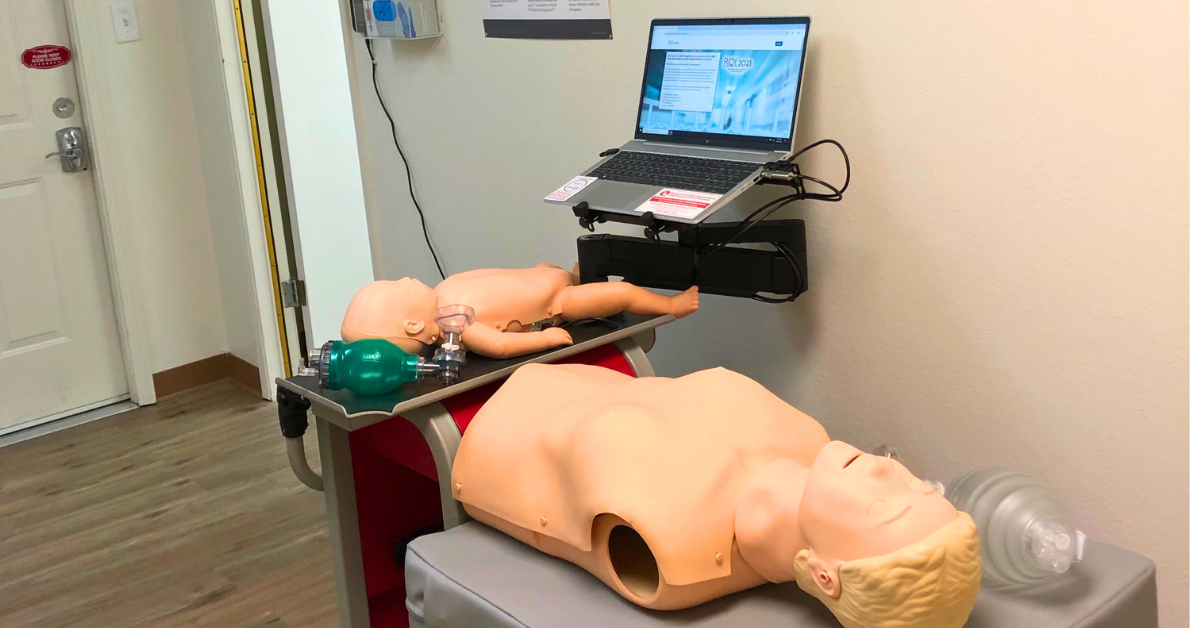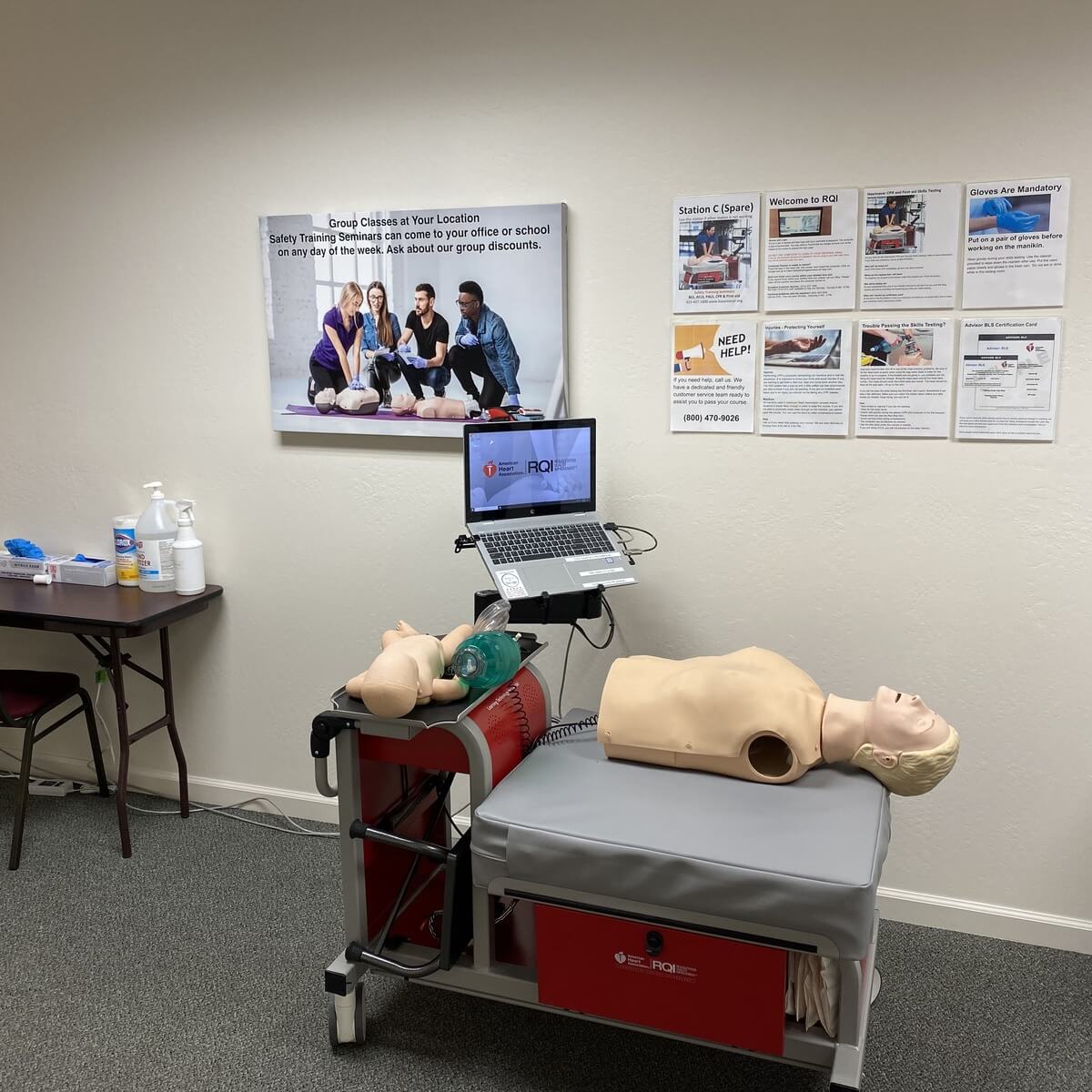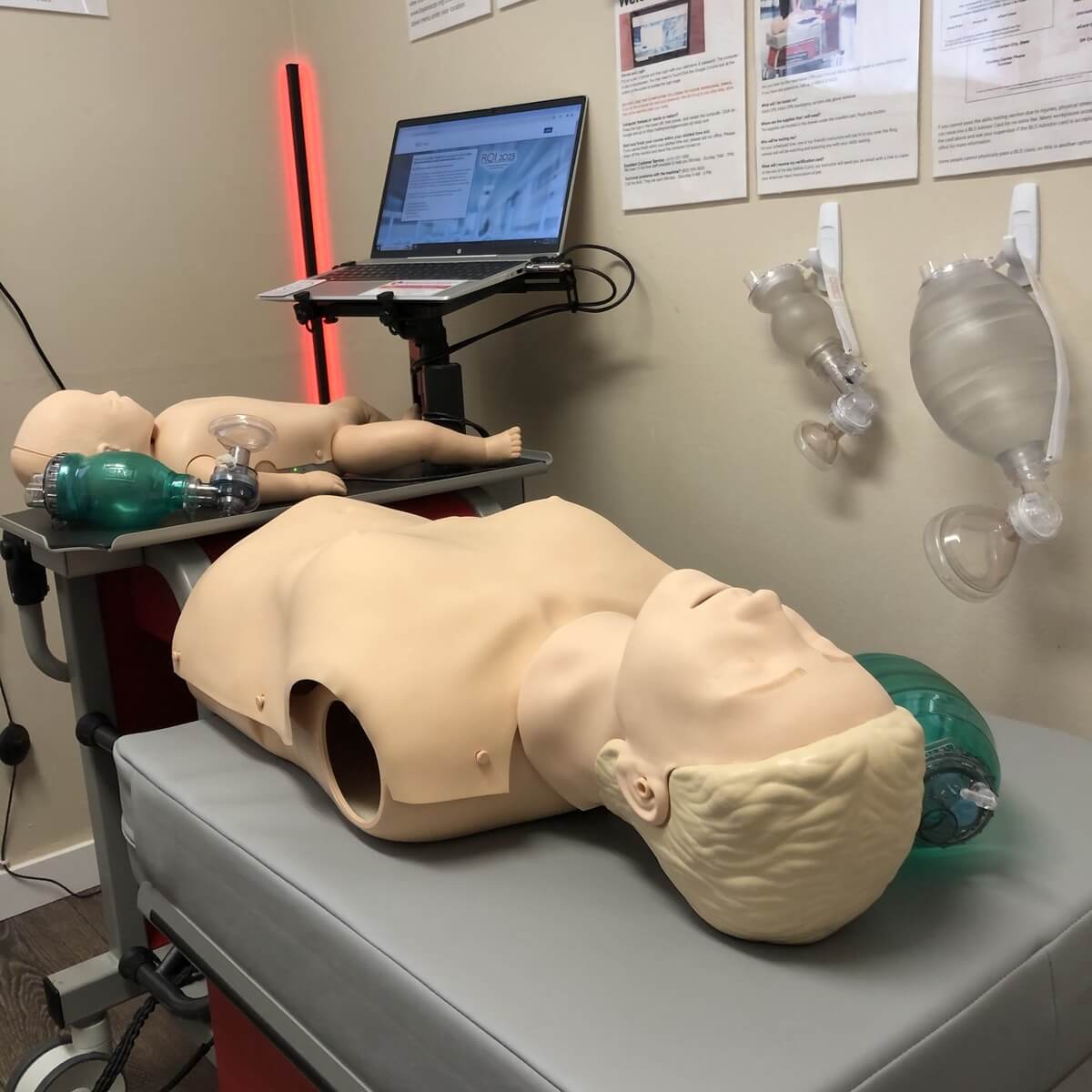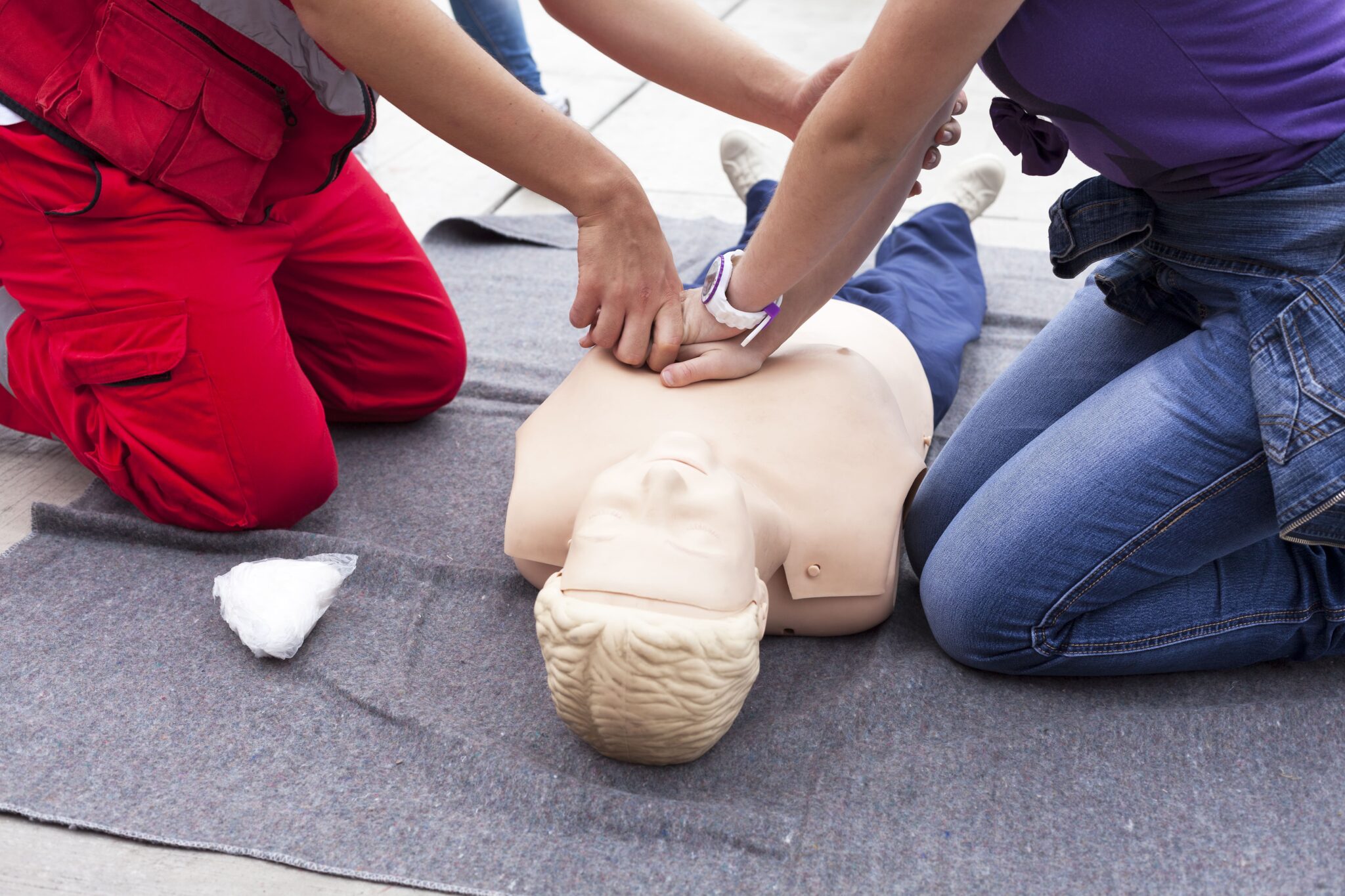Medical emergencies can happen anytime, anywhere. Would you know what to do? BLS training gives you the knowledge and skills to respond effectively in these critical situations. From performing CPR to using an AED, BLS certification empowers you to provide immediate care until professional help arrives. If you’ve been searching for “bls training near me,” you’re in the right place. This article will cover everything you need to know about BLS, including what the training entails, why it’s important, and how to find a course that fits your needs. Let’s explore how BLS training can prepare you to make a real difference in someone’s life.
Key Takeaways
- BLS training provides essential life-saving skills: From CPR and AED use to airway management, BLS equips you to respond confidently in medical emergencies, whether you’re a healthcare professional or not. Find a course that fits your needs and become prepared for anything.
- Select the right BLS course and training center: Consider factors like course format (online, in-person, or blended), cost, and the training center’s reputation and affiliation with recognized organizations like the AHA. Choose a learning experience that works best for you.
- Stay current with your BLS skills: Regular practice and refresher courses are crucial for maintaining proficiency. Review key techniques, consider joining a study group, and stay updated on the latest guidelines to ensure your skills are always ready.
What is BLS Training & Why is it Important?
BLS training gives you the skills to respond to life-threatening emergencies. It’s a critical course for healthcare providers and anyone who wants to help in a crisis. From medical professionals like doctors and nurses to everyday heroes like parents and teachers, BLS certification empowers you to act quickly and confidently when it matters most. Safety Training Seminars offers a range of American Heart Association (AHA) courses, including BLS certification, to prepare you for these situations.
What BLS Training Covers
BLS certification covers core life-saving techniques. The curriculum focuses on high-quality CPR for adults, children, and infants. It also teaches you how to recognize and respond to cardiac arrest and other emergencies. You’ll learn how to use an automated external defibrillator (AED) and practice essential skills for airway management and rescue breathing.
BLS Skills You’ll Learn
BLS certification equips you with practical skills to handle various medical emergencies. You’ll learn how to perform CPR, including chest compressions and rescue breaths, for victims of all ages. The training also covers the proper use of an AED, a device that can help restore a normal heart rhythm. Additionally, you’ll learn techniques to relieve choking and provide basic airway management. These skills give you the confidence to assist until professional help arrives.
Why BLS Matters for Healthcare Providers and Everyone Else
BLS training is essential for everyone, not just healthcare professionals. For medical providers, BLS is a foundational requirement, ensuring they can deliver immediate care during emergencies. But these skills are equally valuable for anyone. Knowing BLS can help you respond effectively to emergencies at home, in public spaces, or at your workplace. BLS training empowers individuals to make a real difference in critical situations, potentially saving lives.
Find BLS Training Near You
Now that you understand the importance of BLS training, let’s explore how to find the right course for you. Whether you’re a healthcare professional or someone wanting to be prepared for emergencies, there are several avenues to explore.
How to Find Local BLS Classes
Finding a BLS course near you is easier than you think. Start with a simple online search for “BLS classes near me” or “BLS certification [your city/region]”. This will give you a good starting point for local training centers and courses. You can also check with local hospitals and community colleges, as they often offer these certifications. Don’t forget to ask friends or family in the healthcare field—they might have recommendations based on their own experiences.
Top BLS Training Providers
Several organizations offer high-quality BLS training. Here are a few reputable providers to consider:
Safety Training Seminars
Safety Training Seminars offers a comprehensive range of American Heart Association (AHA) courses, including BLS certification. As a woman-owned AHA Training Center, they focus on providing high-quality instruction and convenient scheduling. They offer various courses, including BLS, ACLS, and PALS certifications. Check out their RQI programs designed specifically for healthcare professionals. They even have a low-price guarantee!
American Heart Association
The American Heart Association is a leading authority on CPR and emergency cardiovascular care. Their Resuscitation Quality Improvement (RQI) program is a popular choice for healthcare providers seeking BLS certification. It’s a modern and efficient way to get your official AHA BLS certification card.
American Red Cross
The American Red Cross is another well-respected organization offering BLS certification and recertification courses. They have a long-standing reputation for providing reliable training in emergency preparedness.
Local Hospitals and Healthcare Facilities
Many hospitals and healthcare facilities offer BLS training programs for their staff and the community. Check with your local hospitals to see what courses they offer. These programs are often a convenient option for healthcare professionals needing to maintain their certification.
Community Colleges
Community colleges frequently offer BLS certification courses as part of their continuing education programs. These courses can be a cost-effective way to gain essential lifesaving skills.
Choosing the Right BLS Provider
When selecting a BLS provider, consider factors like course format (online, in-person, or blended), cost, and the training center’s reputation. Look for providers who offer hands-on practice, experienced instructors, and up-to-date curriculum aligned with current AHA guidelines. Reading online reviews and comparing options can help you make an informed decision.
Compare BLS Training Options
Once you’ve found a few potential training centers, it’s time to compare them. Here’s what to consider:
Course Length and Certification
BLS courses typically run between 2.5 and 4.5 hours, whether you’re a new student or getting recertified. Check with your certifying body or employer to confirm any specific requirements. For example, some healthcare jobs may require training through the American Heart Association. Others may accept certification from the American Red Cross.
In-Person, Online, or Blended Learning: What’s Best for You?
BLS training comes in several formats. In-person classes offer hands-on learning and direct interaction with instructors. Online courses provide flexibility for busy schedules. Blended learning, like the HeartCode BLS course, combines online learning with an in-person skills session. Consider your learning style and schedule when choosing a BLS course format.
Course Costs & Discounts
BLS course fees in San Francisco typically range from $50 to $150. The price depends on the training center, course format, and type of certification. Look for training centers that offer competitive pricing or discounts on BLS courses. Sometimes, employers cover the cost of BLS training, so check with your HR department.
Check Course Quality and Instructor Credentials
Before signing up, research the training center and instructors. Look for providers affiliated with reputable organizations like the American Heart Association. Check if the instructors are experienced healthcare professionals with up-to-date certifications. Reading reviews can also give you insights into the quality of instruction and the overall learning experience. Safety Training Seminars is a woman-owned, AHA Training Center, offering high-quality courses. Make sure the curriculum aligns with current medical guidelines and best practices.
What Happens During BLS Training?
BLS certification equips you with life-saving skills. You’ll learn CPR, how to use an AED, and how to help someone who is choking, giving you the confidence to assist in medical emergencies. This training is available in several formats, including in-person BLS classes, online courses, and blended learning. Let’s take a closer look at what you can expect during a typical BLS training course.
Typical Course Structure
A BLS course typically begins with an overview of the BLS concepts and principles. You’ll learn about the Chain of Survival, a series of actions that improve the chances of survival for someone experiencing cardiac arrest or other medical emergencies. The course then covers the core BLS skills, including high-quality CPR for adults, children, and infants; how to relieve choking; and the importance of teamwork and communication during emergencies. Many courses, like those offered at Safety Training Seminars, follow the American Heart Association guidelines.
Hands-on Practice and Skills Tests
BLS training isn’t just about lectures and videos—it’s highly interactive. You’ll have plenty of opportunities to practice your skills on manikins, giving you realistic experience in a safe learning environment. Instructors provide feedback and guidance, ensuring you’re performing each skill correctly and confidently. You’ll also learn how to use an AED (automated external defibrillator) and practice using it in simulated scenarios. Skills tests are a key component of BLS training. HeartCode BLS offers a blended learning approach that combines online coursework with a hands-on skills session. You’ll be assessed on your ability to perform CPR, use an AED, and relieve choking.
Getting Certified & Staying Certified
Once you’ve successfully completed the course requirements, including the skills tests, you’ll receive your BLS Provider certification card. This certification is valid for two years. BLS certification is more comprehensive than basic CPR training, covering a broader range of skills and providing more in-depth training. To maintain your BLS skills and keep your certification current, you’ll need to take a refresher course before your certification expires. The American Heart Association RQI program offers a modern approach to BLS certification, focusing on hands-on practice and real-time feedback. This makes staying up-to-date on your skills convenient and efficient.
Get the Most Out of Your BLS Training
BLS certification empowers you to save lives. From healthcare professionals to everyday people, BLS training gives you the skills to respond confidently during medical emergencies. Here’s how to make the most of your training:
Prepare for Your BLS Course
Before your BLS class, review the course materials. Many providers, like Safety Training Seminars, offer resources to familiarize yourself with the content. Previewing the material sets you up for success in class and helps you absorb information faster.
Overcome Common BLS Challenges
One common challenge is understanding the difference between BLS for healthcare providers and the general public. Knowing the specific BLS principles for healthcare workers is crucial for patient safety. Learn more about these distinctions and common misconceptions surrounding
Practice Regularly & Take Refresher Courses
Regular practice is key to retaining your BLS skills. Set aside time each month to review the techniques and algorithms. Consider joining a study group or practicing with a colleague. Refresher courses are also essential. Research suggests that reflective practice improves knowledge retention, making refresher courses a valuable investment. Check with your certifying organization, such as the American Heart Association, for recertification recommendations.
Use Your BLS Skills in Real Life
While we hope you never have to use your BLS skills, being prepared can make all the difference. BLS training equips you with the knowledge to follow algorithms effectively, ensuring the best possible outcome for a patient. Learn more about the benefits of BLS training. Remember, your skills can save lives, both in and out of the healthcare setting.
Whether you’re updating your certification or starting fresh, BLS CPR Classes in Manteca offer flexible schedules for learners of all backgrounds. For those located in the South Bay, BLS CPR Classes in Santa Clara deliver convenient and comprehensive training options aligned with AHA guidelines.
Frequently Asked Questions
What’s the difference between BLS and CPR?
CPR is a specific skill within BLS. BLS (Basic Life Support) is a broader term encompassing several life-saving techniques, including CPR, using an AED, and relieving choking. Think of BLS as the toolbox, and CPR as one of the essential tools inside.
How often do I need to renew my BLS certification?
BLS certification is typically valid for two years. It’s essential to renew your certification before it expires to maintain your skills and credentials. Check with your employer or certifying organization, like the American Heart Association or American Red Cross, for specific renewal requirements.
What if I’m nervous about performing BLS in a real emergency?
It’s completely normal to feel nervous about using your BLS skills in a real-life situation. That’s why regular practice and refresher courses are so important. The more you practice, the more confident you’ll become. Remember, even starting CPR or using an AED before professional help arrives can significantly improve someone’s chances of survival.
Are online BLS courses as good as in-person classes?
Both online and in-person BLS courses have their advantages. Online courses offer flexibility, while in-person classes provide more hands-on practice and direct interaction with instructors. Blended learning, which combines online learning with an in-person skills session, can be a great option for those who want the best of both worlds. Consider your learning style and schedule when choosing the format that’s right for you.
How do I choose the right BLS training provider?
Look for providers affiliated with reputable organizations like the American Heart Association or the American Red Cross. Consider factors like course format (online, in-person, or blended), cost, instructor experience, and the training center’s reputation. Reading online reviews and comparing options can help you make an informed decision. Make sure the curriculum aligns with current medical guidelines and best practices.








